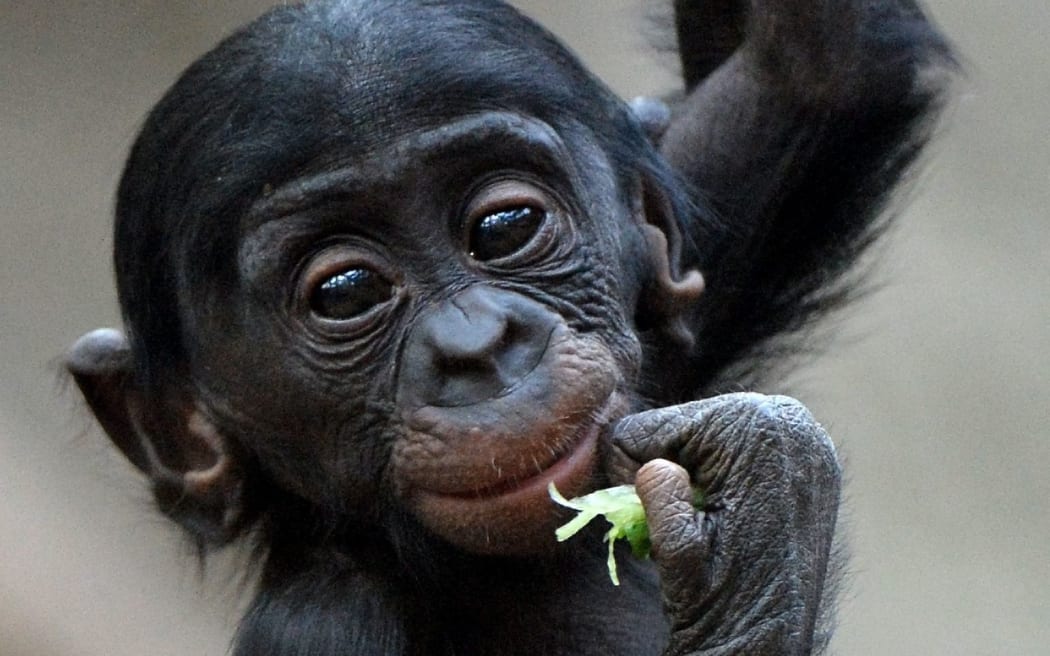Scientists studying wild bonobo apes - one of the closest relatives to humans - say they have communication skills that were previously thought to be unique to humans.

Bonobo apes have more in common with human babies than previously thought. Photo: AFP
British and Swiss psychologists said the bonobos use a single call that their fellow primates interpret.
It used to be thought that apes could only make noises that were tied to their emotions, such as barks of alarm or hoots of excitement.
But a strange peeping sound recorded from wild bonobos - which are found in the Congo Basin - appears to have more in common with the calls of human babies.
Using a single vocal signal in multiple contexts - referred to as "functional flexibility" - was thought to be a human ability that is developed very early. Human babies as young as three months have been shown to use squeals and growls across a wide range of situations, whether they are happy, distressed or neutral.
Dr Zanna Clay from the University of Birmingham noticed a similar phenomenon among the bonobos she was studying in the Democratic Republic of Congo.
As well as the usual screams, barks, pants and grunts, she heard a particular squeaking sound or "peep" being used all over the place.
"It seemed very flexible," Dr Clay said. "In basically every context you can imagine a bonobo experiencing, they peep.
"So we collected recordings of peeps produced in many different contexts."
Working with colleagues from the University of Neuchatel, Switzerland, Dr Clay found that the peeps used in several different positive or neutral situations - such as feeding or travelling - were acoustically identical, just as she had suspected.
This was important because the "meaning" of the peeps must be determined partly from their context - whether that is other calls delivered in a sequence, or other things that the bonobos are doing.
"On their own, [the peeps] don't tie so strongly to one meaning," Dr Clay explained.
So it seems that this kind of "structural flexibility", considered one of the building blocks of human language, is not unique - in fact it turned up several branches back in our family tree.
"Our capacity for this type of flexible signalling was probably a much older capacity than just the human lineage," Dr Clay said.
The new findings push back the development of context-free vocal calls to our shared ancestor with bonobos, 6-10 million years ago.
The paper was published in the journal PeerJ.
- BBC

